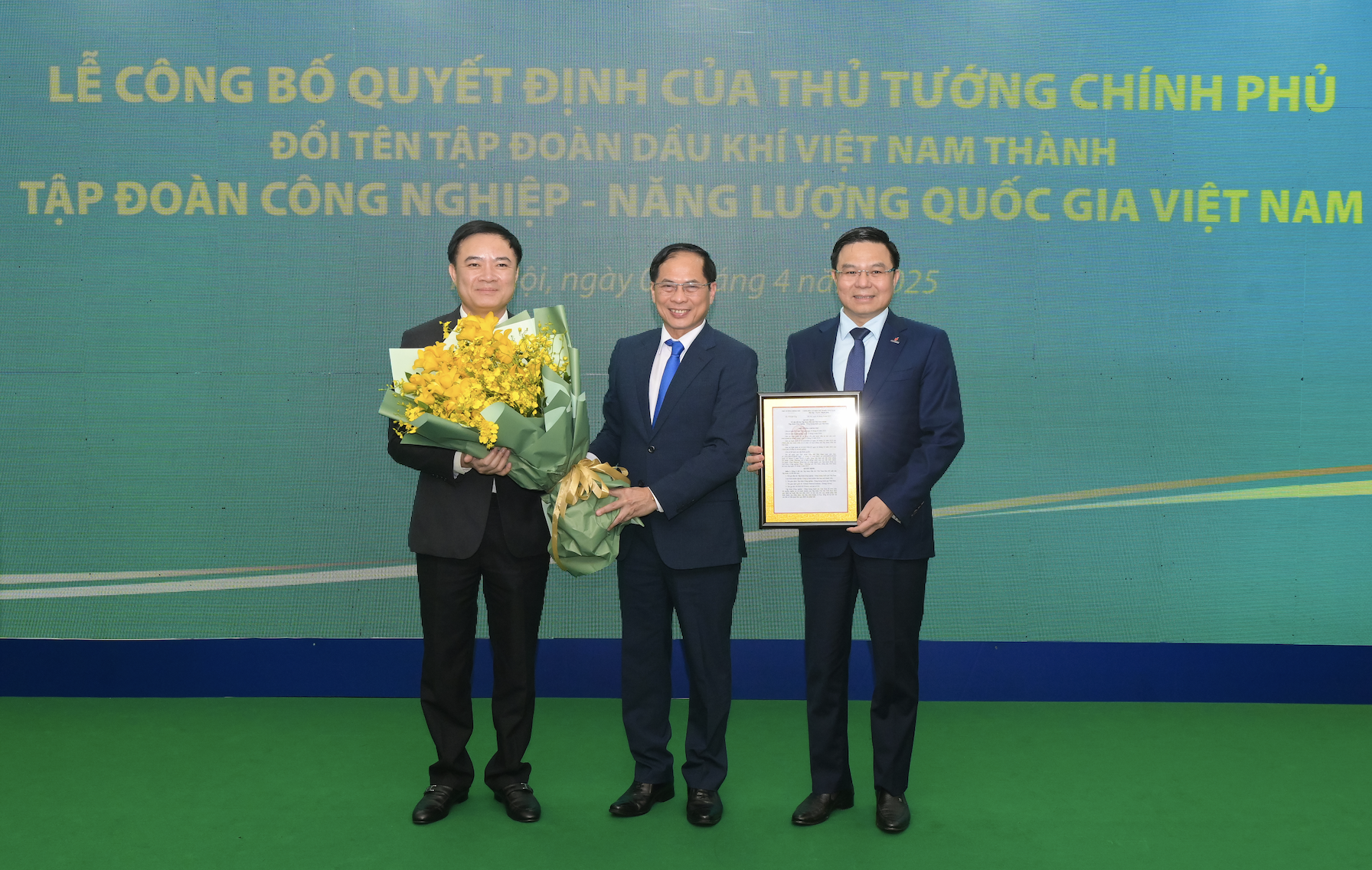
Deputy Prime Minister Bui Thanh Son officially handed over the decision to rename the Vietnam Oil and Gas Group as Petrovietnam. Photo: PVN
On the afternoon of April 9, Deputy Prime Minister Bui Thanh Son officially handed over the decision to rename the Vietnam Oil and Gas Group as the Vietnam National Industrial and Energy Group (Petrovietnam). The decision was signed and issued by the Prime Minister the same day.
This rebranding confirms that Petrovietnam is not merely a conventional oil and gas enterprise, but a national hub for industry and services and a key pillar in energy supply, contributing to Vietnam’s energy security.
The name change also supports the group’s alignment with the directives of the Politburo, the global trend toward energy transition, and the Prime Minister's commitment to Net Zero emissions by 2050.
Petrovietnam has reaffirmed its strategic development focus on three pillars: energy, industry, and services, with energy as the core foundation.
The renaming is also in line with Resolution No. 41 on strategic development guidelines for Vietnam’s oil and gas industry, which emphasize leveraging the sector’s strengths to advance renewable energy and new energy industries.
This includes offshore wind power projects for export, as well as hydrogen and ammonia production initiatives.
At the naming ceremony, a contract extension for the Petroleum Sharing Contract (PSC) at Block PM3 CAA was also signed between Petrovietnam and Malaysia’s national oil and gas corporation, Petronas. The original PSC was signed in 1989.

Since then, the cooperation has expanded beyond exploration and extraction into new fields such as liquefied natural gas (LNG), renewable energy, and carbon reduction technology applications. These align with the global energy transition and the broader development scope of both companies.
As Vietnam and Malaysia upgraded their relationship to a Comprehensive Strategic Partnership in 2024, the renewed PSC at Block PM3 CAA underscores the pioneering role of Petrovietnam and Petronas in bilateral cooperation, particularly in the energy sector.
At the ceremony, Deputy Prime Minister Bui Thanh Son congratulated Petrovietnam on its new name and the successful PSC renewal at Block PM3 CAA. He emphasized that these milestones reflect the maturity and progress of both Petrovietnam and Petronas. According to him, their deepening cooperation marks the start of a new chapter.
He noted that the renaming of Petrovietnam represents not just a change in title but a significant development, charting a clear path forward in energy and industrial leadership. The Vietnamese government places high confidence in the group’s ability to shoulder its new responsibilities and deliver strong results in the coming years.
Amid the urgent global energy transition, the Deputy Prime Minister highlighted that the cooperation between Petrovietnam and Petronas demonstrates mutual respect, shared benefits, and a commitment to sustainable development.
The Vietnamese government praised both sides for their commitment to efficient resource exploitation, green technology application, energy conservation, and sustainable growth. He expressed hope that both countries would soon collaborate to build a clean and green electricity network.
The Block PM3 CAA oil and gas project has gone through six development phases, with 39 updates to its exploitation plan. It includes the operation of 178 development wells, two central processing platforms (CPPs), two floating storage and offloading (FSO) vessels, and more than 10 wellhead satellite platforms, connected via the 298-kilometer PM3 CAA - Ca Mau gas pipeline.
The current production level stands at approximately 20,000 barrels of oil and 200 million cubic feet of gas per day.
By the end of 2024, the project had produced about 250 million barrels of oil and 1.6 trillion cubic feet of gas (equivalent to 43 billion cubic meters), of which nearly 25 billion cubic meters of gas have been supplied to Vietnam. This has contributed to the formation and development of the Ca Mau gas - power - fertilizer complex, playing a major role in the socio-economic development of the Southwest region.
With a total investment of approximately USD 10 billion, the project has generated oil and gas revenues of up to USD 24.8 billion, delivering outstanding economic value and making significant contributions to the state budgets of both countries.
Tam An